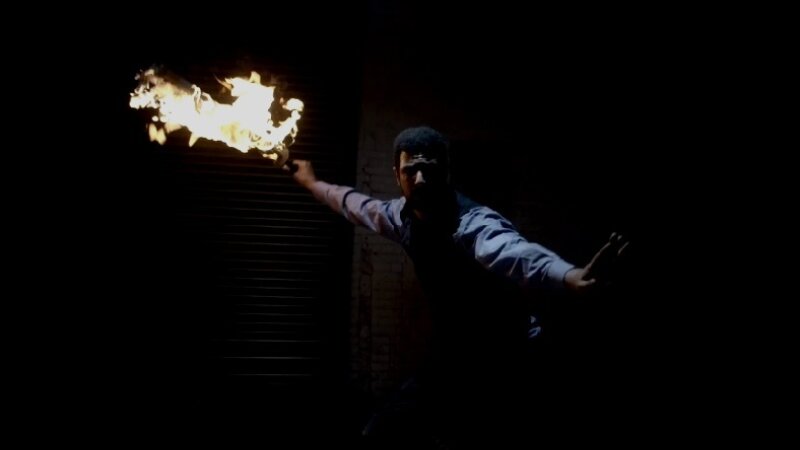Filmreel
Bringing Art House into the Mainstream.
With Alfonso Cuarón’s Gravity filling cinema seats around the world and his team confidently preparing their respective BAFTA and Oscar speeches at the time of writing – a rare instance of an art house film enjoying mainstream popularity – let’s spare a thought for the numerous gems that are made every year but rarely get seen by the public at large.
If commercial success purely depended on the extent to which an artistic film can ‘touch’ its audience, we’d all be spending too much time on cinema seats or staring at screens. From Bergman to Boyle, Wenders to Winterbottom, directors have inquired on the human condition using a visual language that most of us could relate to. And yet their films are rarely, if ever, box office hits.
Cuarón’s film is an existential odyssey on loneliness, and like Danny Boyle’s earlier 127 Hours, concerns a protagonist forced to face adversity and suffocate in utter isolation. Conceptually at least, they’re not too dissimilar to angsty films made by the likes of Antonioni or Tarkovsky, except that the formers’ endurances are markedly physical and action packed.
Gravity’s mainstream acceptance and success – despite its art house trappings of a metaphor-laden subject matter, moments of silent introspection where very little happens, and detached observation using ambitious tracking shots that follow action from a distance – is nevertheless interspersed with impressive action sequences and intense drama featuring bankable stars, George Clooney and Sandra Bullock. In its quest for gritty realism, the team had to make technical breakthroughs in CGI and special effects that have already become new benchmarks in science-fiction film production. Propelling the endeavour is the storyline of a character trying to overcome insurmountable odds. Gravity’s commercial success could therefore be attributed to its incidental ‘excitement factors’.
One could quote another earlier (and perhaps more famous) example in Michelangelo Antonioni’s mind-blowing Blow-Up, made in London in the Swinging Sixties. Commissioned by MGM, it was the first of three films Antonioni made in the English language and the only one to have found box office success, but alas, for the wrong reasons: the presence of a seductive Vanessa Redgrave, and a scene where Jane Birkin and her friend are shown frolicking in the nude – still a novelty at the time. The film’s layers of metaphors and philosophical insights were either subsequently ignored or went largely unnoticed by first-time viewers. Excitement and stimulation, it seems, is what helps art house cinema cross over into the mainstream.
Mainstream films, of course, revel in their chosen ‘excitement factor’ by targeting a common denominator. Tom Hooper’s The King’s Speech did rather well commercially thanks to its well-trodden formula of a hero once again overcoming the odds, in this case a speech impediment. There was little need for anything more sensational. Every successful film, whatever its artistic credentials, has similarly exploited the human desire to relate to characters that are invincible, dashing, extraordinarily well-endowed, brimming with chutzpah or just plain fortunate.
‘Excitement factor’, unfortunately, prevents a whole swathe of remarkable films with a moral and social conscience from reaching a wider audience – ones that have something profound and worthy to say, but very little to titillate us with. The same can be said of films with some of the most sublime imagery ever captured by a camera and the most mesmerising sounds ever recorded for cinema.
So how can so-called art house films ever reach a wider audience without compromising their integrity? How do we get more cinemas involved in screening these films? Is it even necessary for art films to reach out to a mainstream audience? Can’t these different worlds exist simultaneously? These are questions that have been asked many times before and will no doubt continue to be raised in future, because they pertain to matters beyond the realms of cinema itself – the wider politics of art, entertainment and culture.
But the fact remains that ‘art’ as an idea has kept changing (not necessarily evolving) faster than people’s ability to accept it as part of their regular ‘entertainment’. There will forever remain a distinction between the two, even if it requires manufacturing. One will be venerated as the high-point of our culture, while the other will strive to keep pace with it. And when directors like Cuarón succeed in pushing the envelope of art house acceptance among a mainstream audience, however slightly, it should still be applauded.
THIS MONTH AT THE SHOWROOM...
UNDER THE SKIN
FRIDAY 14 MARCH
DIR. JONATHAN GLAZER | 2013 | UK | 1HR 48MINS
Our previous unbridled enthusiasm for this film (see NT#70) compels us to highlight it amongst the various cinema releases this March. It's based on a novel by Michel Faber. It stars Scarlett Johansson as an alien seductress playing on the libido of unsuspecting hitchhikers. And it's the return of Jonathan Glazer to the big screen. Enough said. )





